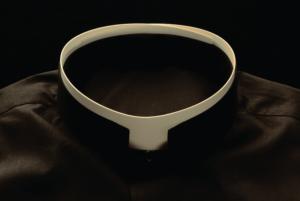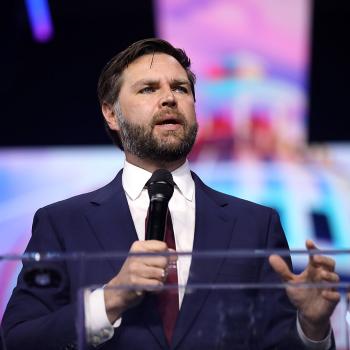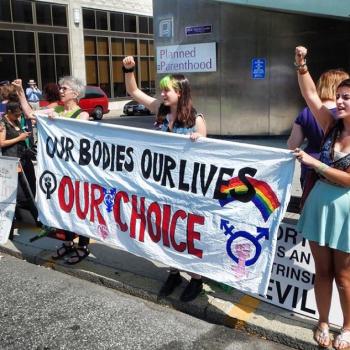
So they lawyered up. That was the first mistake the bishops made in the sex abuse crisis. Deciding to be CEOs rather than shepherds. Thinking that money would solve what pastoral care would not attempt. Then the leaders of the Church made a second mistake: the bishops broke the foundational sacramental link between a bishop and his priests. What was supposed to be a firm partnership of brothers in ministering to the People of God became a standoff between a boss and his employees. Vatican II saw the priests as the sacramental extension of a bishop’s ecclesiastical shepherding outreach. Instead, they were used as pawns to buttress the wall of defense between a bishop and his people.
The Breaking Of Trust Between Bishop And Priest
To be fair, this split had already been happening for decades in the Catholic Church of the U.S.A. But it was exacerbated by the sex abuse crisis. What should have been a cooperative united attempt to heal a Church reeling from the crisis in authority occurring because of sexual abuse, became instead a circling of the wagons by the chancery, with the priests left to fend for themselves.
Priests were supposed to trust that their bishop had their backs, that the bishop would support and lift up his priests in times of crisis. The bishops did not desert the priests out of malice; rather, they fled from their priests out of fear. The laity mistakenly believed the bishops were defending priests by hiding the predators among them. Not so. They were trying to pretend those bad priests did not exist. The bishops did this to protect themselves. Now they went to the other extreme. As the crisis grew, the bishops willingly threw away the innocent as well as the guilty. There was a presumption that an allegation against a priest was true until it was proven false.
The Problem With Zero Tolerance
The bishops imposed a zero tolerance policy, which at the time made perfect sense. Sexual abuse was a heinous offense and though it came in different guises, it was bad and had to be punished. Just like a plague would be quarantined, bishops felt the contagion of sexual abuse needed similar draconian action. It is an effective way to stop an evil, but its take no prisoners attitude caused unforseen damage. In hindsight, zero tolerance, still in effect throughout the Catholic world, did and continues to do several terrible things:
- First, it brands all sexual abuse as equal. Inappropriate words, conversations, touching, sexual contact, rape, pedophilia–all these were de facto considered the same offense. Understandably so, as the Church reacted to its previous denial of any type of crime inherent in these activities. But with time, new understandings have appeared. There are different levels of sexual abuse, some much more serious than others. But the penalties remain equal–total suspension of priestly ministry.
- Priests began to fear almost any contact with young people. Children, wishing to hug their priest after Mass now were often pushed away. Priests shied away from comforting anyone lest it look too personal. Priests who for decades had been taught to become more relatable, more human, more accessible now questioned the very way they communicated with parishioners. They began to fear the people they were supposed to serve. A laity which despises the distant priest standing on a pedestal, is now seeing there fears confirmed as priests are forced to keep their distance from parishioners in new, unforseen ways.
- Laity read back today’s understanding or fear of sexual abuse to actions between priests and people from decades ago. Rape will always look like rape and pedophilia will always look like pedophilia, but past actions from a different time and cultural expression are now often read as serious sexual improprieties. Why? Memories fade and are often mistaken and the present fears are sometimes imprinted upon past actions that originally never had any sexual connotation.
- A priest in trouble in times past, would go to his bishop for help. That came to a screeching halt after 2002, when a priest could no longer trust that his bishop had his best interests at heart. In fact, any whiff of sexual impropriety would cause a bishop to now place immediate restrictions on priestly ministry whether accusations were true or not. That sounds prudent on the part of the bishop, but it destroys the trust between ordained ministers. To this day, an adversarial relationship is implanted and growing between priest and bishop. While that is terrible for priests, it is even worse for bishops who now find themselves almost totally alone in the leadership of their dioceses.
- Restrictions on priestly ministry based simply upon a credible accusation destroy a priest’s career–“credible” not having any real definition but determined instead on what the individual bishop or review board says a credible accusation actually is. The caveat that a bishop must try to restore an innocent priest’s reputation is ludicrous. The priest has been convicted in the realm of public opinion and the bishop never forgets that a priest has been accused, even falsely. And the institutional Church accepts this as necessary collateral damage. A bishop is willing to forgo his role as shepherd both to priests and laity in order to save the economic future of his diocese.
- Zero tolerance is still accepted as the best way forward, and perhaps it is, but at what a cost. It definitely works. But is it moral? It is the ecclesiastical version of the Vietnam War’s view of victory; namely, “we must destroy this village in order to save it.” Zero tolerance is spiritual napalm, burning the enemy predators but also destroying the innocent in its raging inferno. And when the victor, in this case the bishop, looks over the field of battle, he finds a populace and a priesthood no longer trusting him. All are appalled at the destruction of community and of individual trust. The presence of God is obscured by the smoke of battle. The bishop is no longer looked on as shepherd, but as enforcer. Someone, please explain how such a leader is going to be the hands, voice, eyes and face of Christ to the people.
Look On My Works, Ye Mighty, And Despair
From a legal viewpoint, the Church is doing what it must do to survive. But from a spiritual viewpoint, the bishops have created an ecclesiastical wasteland with the Church in America a shadow of its former self. What a disaster. Unfortunately, it looks like we have hit the nadir of creative ideas to further correct the problem of sexual abuse in the Church. The bishops have accepted that the institution will continue to use the legal profession, both canonical and secular, as the first response to any occurrence of abuse.
The bishop’s approach might have inched the Church over finish line toward a solution to the problem, but then came their third and most destructive mistake: The McCarrick affair and the Church’s response to it. For an explanation of that, please look forward to Part Three on The Mistakes of the Bishops.












